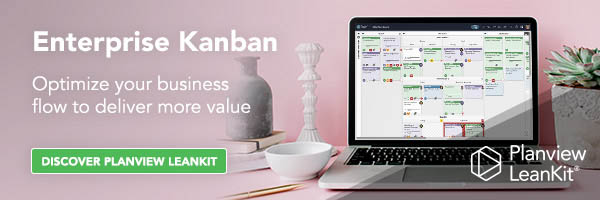
Working out of spreadsheets can make life stressful—unnecessarily so. This is only compounded when teams are also spread out across departments and geographic locations. Take Allen for instance. As a global PMO team member for the aviation organization, his workdays are often extremely stressful. Not only must he help monitor work across three continents and 12-time zones, but he must ultimately manage a portfolio of about 45 projects per year, all while operating out of spreadsheets. Now, this problem isn’t uncommon—quite the opposite. Large and small organizations across the globe struggle with collaborating across teams, whether or not they’re geographically dispersed. For this reason, Allen’s team has always settled with spreadsheets, unsure of how to change and allowing familiarity to win out over improving productivity.
However, keeping those spreadsheets up-to-date and relevant is not a simple undertaking. At the end of each week, mountainous status updates are given to the Head of IT Project Delivery, to be sorted out and then updated within numerous different spreadsheets and compiled into useable reports. Not only can this take hours to complete, but can be extremely tedious and, quite frankly, nerve-wracking. Having finally had enough of the spreadsheet chaos within his PMO and the larger organization, Allen decided to make a change.
Pain points don’t have to be permanent.
Here’s the dilemma—spreadsheets are common, familiar, but they come with numerous pain points. Organizations are inclined to stick with spreadsheets—people know how to use them, they make sense—but are they the most effective collaboration method? No. Not by a long shot. And there’s no reason why teams should settle or accept their pain points as permanent. There’s a better solution out there, something Allen understood. He begins his path to improvement by analyzing the numerous pain points his PMO is currently experiencing due to their reliance on spreadsheets:
- The PMO receives only a snapshot of their progress;
- Updating spreadsheets is extremely tedious and time-consuming;
- Collaboration requires employees to download then re-upload local copies of spreadsheets; and
- Team members must wait for the weekly report to know if there are any issues or risks.
Everyone is affected, in one way or another.
The PMO and Head of IT Project Delivery aren’t the only ones affected by such chaos and inefficiency. In speaking with his colleagues, Allen discovers that the department’s assistant manager struggles to see project stages and status reports, the data transformation specialists are forced to share one file that makes data filtering difficult, and the web development manager runs into issues regarding her team’s workload and understanding who is doing what.
Don’t worry—there’s a way out of the madness.
After researching alternative project management solutions, Allen reaches the conclusion that the PMO must replace all the spreadsheets with a single collaboration tool that has Lean and Kanban capabilities. Only then will everyone be granted shared access to a flexible tool that not only improves collaboration but the process of individual work as well. Managers will be able to better understand and visualize their team’s individual workloads, there will no longer be a need for a central keeper-of-information, and it will no longer be necessary to wait for the weekly report to view any issues—team members will be able to see any delays or issues immediately.
Sit back and relax, knowing everything is under control.
Allen helped revolutionize his organization by presenting the solution of lean and agile delivery to replace all those spreadsheets. Now, rather than spending hours updating or digging for the most recent spreadsheet, his global PMO has:
- Obtained the ability to quickly view what is happening around the world, made possible through filters that separate out geographic locations;
- Balanced employee workloads so no one is overworked or has too much free time;
- Cut the time spent in weekly team meetings down from an hour to 20-25 minutes;
- Saved 40 hours per year in preparing executive reports; and
- Achieved high marks of satisfaction from their internal customers for delivering projects on time, on budget, and within scope.
Allen and his team haven’t missed working out of spreadsheets for a single moment, and they’re only one example. With Lean and Agile solutions, work becomes simpler, more organized, and teams can get work done quicker and more efficiently. Interested to know what tool Allen recommended to replace all those spreadsheets? It’s Planview’s Lean and Agile Delivery solution. Experience it for yourself by registering for a free demo, and check out the solution brief, “Accelerate Lean and Agile Delivery.”






